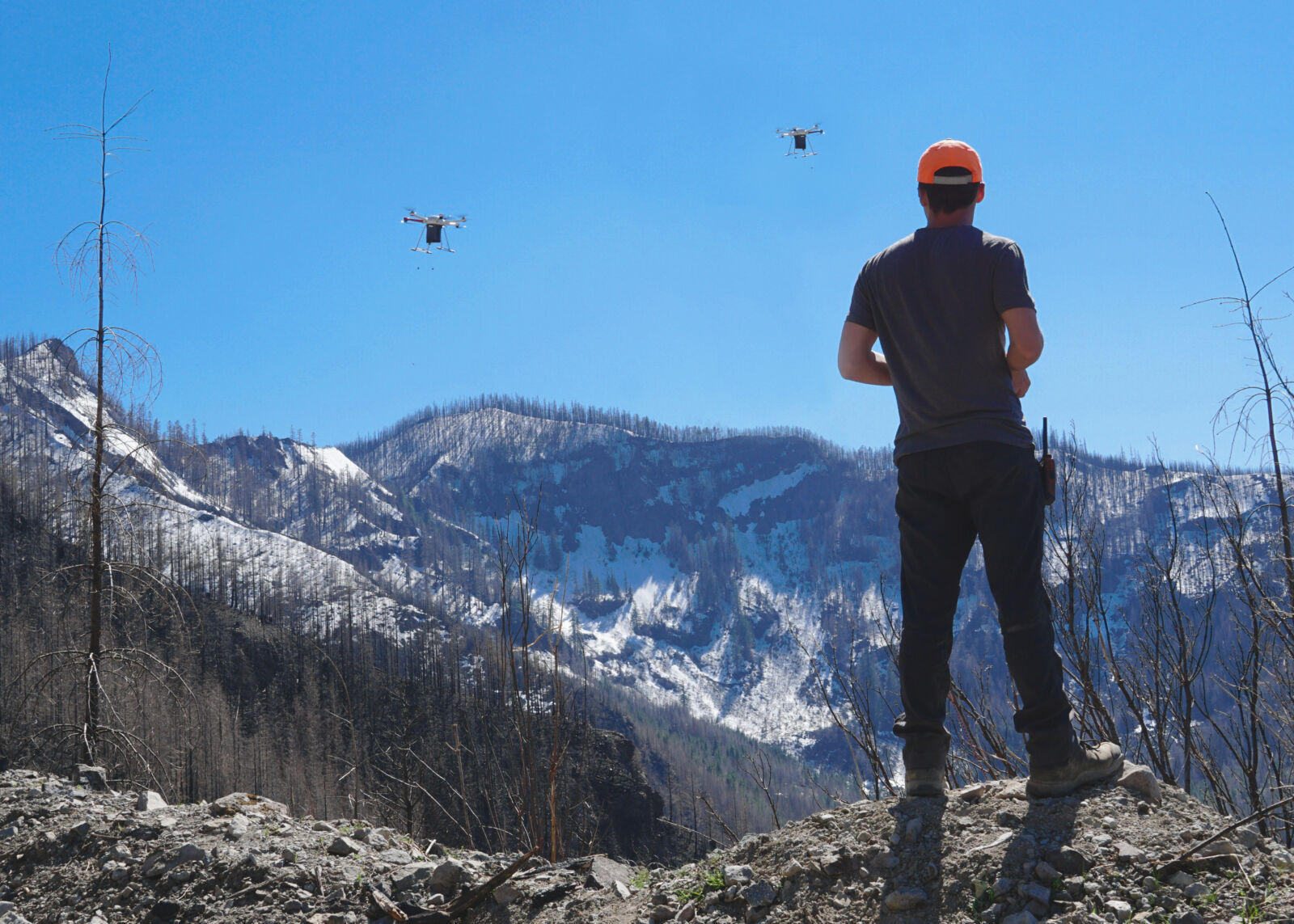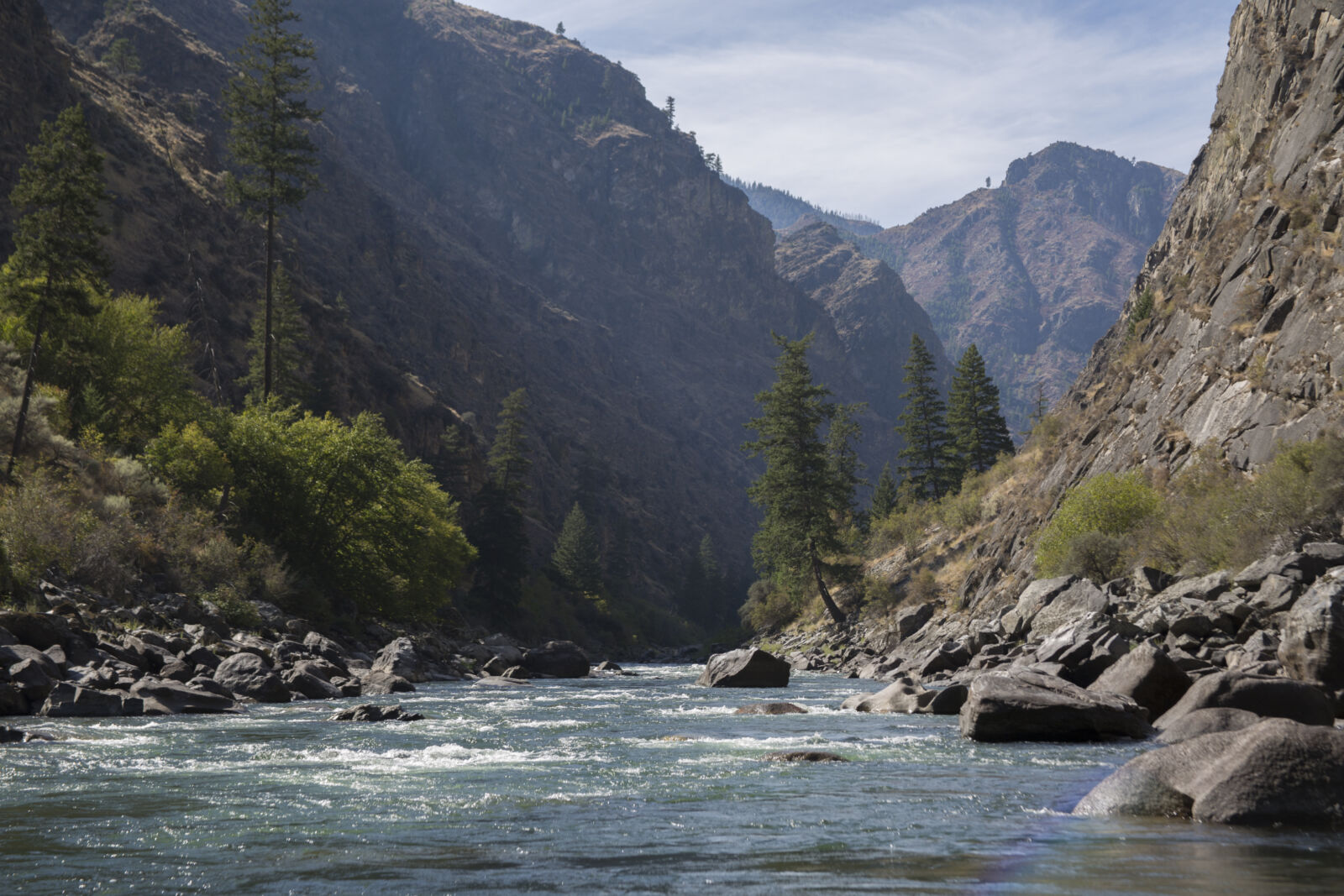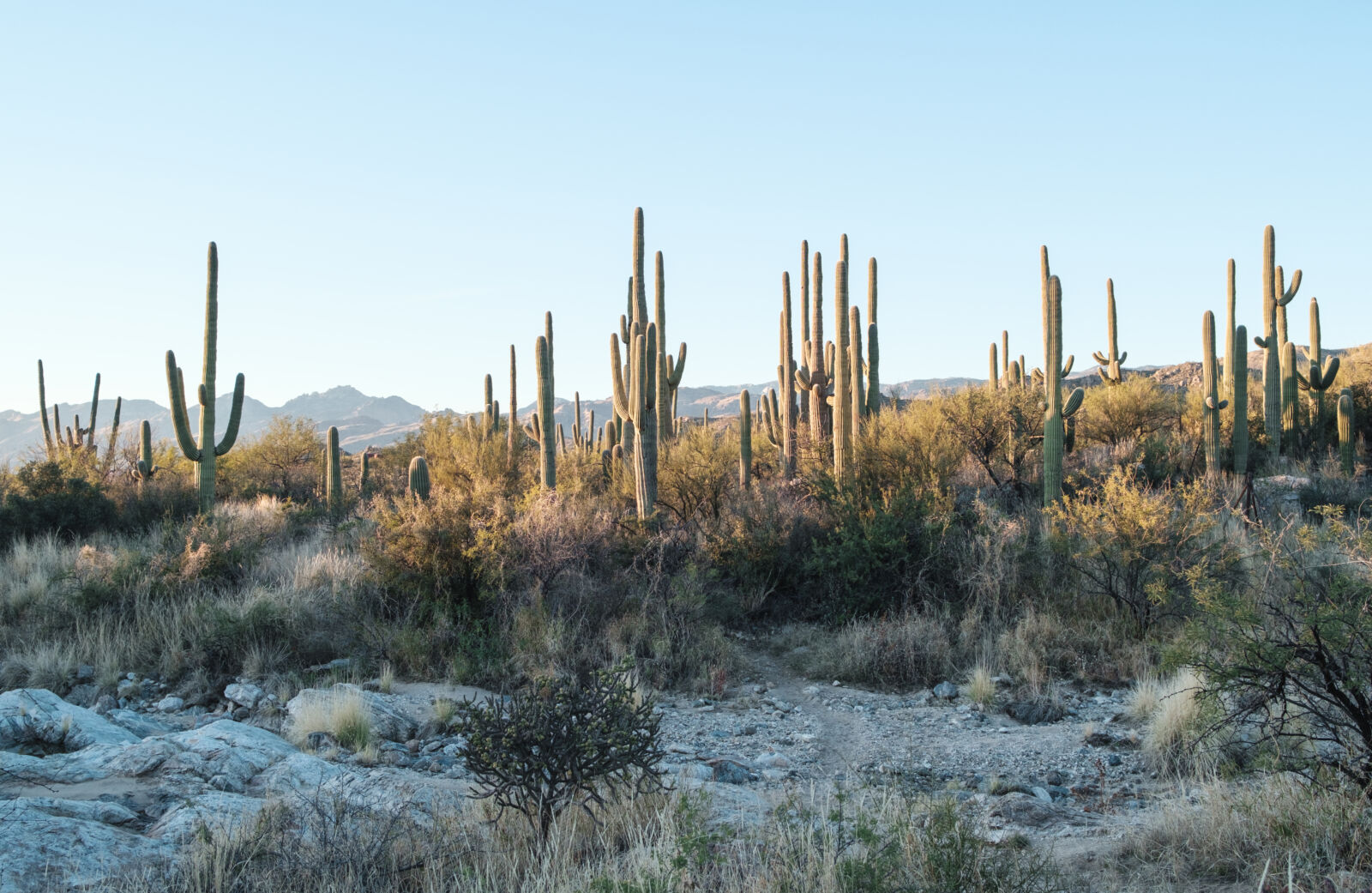Planting seedlings, aka baby trees, on National Forests is the focus of the NFF’s Reforestation Program. Sometimes we get an exciting opportunity to expand our efforts beyond trees to boost capacity and overall conservation work.
Why move beyond the trees? Regrowing and restoring National Forests involves more than planting trees. It often includes less prominent, yet equally important work that doesn’t boast the mega-impressive metrics traditional projects do (think: “500,000 trees planted!”). The NFF plants trees for $1 per tree, and when we can stretch our funds to support this work, we do.
Below are a few examples of projects we are supporting that align with our reforestation goals. They may not actively plant trees, but each will broaden and amplify recovery efforts on National Forests.
Aerial Seeding for Wildfire Recovery on Umpqua National Forest, Oregon

Aerial seeding with drones. Photo by DroneSeed.
Aerial seeding has turned “drones” into a bit of a buzzword in the reforestation world over the past few years and, according to some, rightfully so. Drones can quickly spread tree seeds over a burn area soon after a large wildfire – a few weeks or months, depending upon seasonality, versus the typical timeline of one to two years for most traditional reforestation projects that require planning, site preparation, and seedling availability. Drones can also reach further away from an access road and into more difficult terrain than most tree planters can hike.
However, there are limits to reforesting by drone seeding. Drones spread seeds from the air so there is less precision in where the seeds will land. Professional tree planters plant seedlings according to Forest Service specifications and in microsites, like the shade of a log. As you might expect, drone seeding studies show fewer seeds grow into trees compared to traditional hand planted seedlings, which is why many companies use a combination of drones and hand planting when reforesting.
Still, with an ever-growing need for reforestation on National Forests, aerial seeding with drones is another tool for forest managers. With all the buzz on reseeding with drones, we’ve been pretty interested too. When NFF’s Umpqua Restoration Program Coordinator approached our reforestation team with a pilot drone seeding project on the Umpqua National Forest, we jumped at the chance.

Piloting drones for aerial seeding. Photo by DroneSeed.
Partnering with DroneSeed and the Umpqua National Forest, the NFF is funding the aerial seeding of 25 acres that were affected by the 2020 Thielsen Fire. Thousands of Douglas-fir, Engelmann spruce, and western white pine seeds - nestled within DroneSeed’s biodegradable and nutrient-loaded seed “pucks” - will be dropped across the burn scar. The project location includes riparian areas with tributaries that hold critical fish habitat. If successful, this pilot project can help revive and improve watershed benefits.
This drone seeding project is in addition to traditional reforestation the NFF supports on the Umpqua. We are excited to expand our work here and can’t wait to see the results of this pilot project!
Partnership Program for Investments in Local Workforce and Reforestation on Salmon-Challis National Forest, Idaho

Salmon-Challis National Forest, Idaho. Photo by the U.S. Forest Service.
Salmon-Challis National Forest covers more than four million acres of Idaho’s eastern center. Here, it holds historical and cultural significance, two designated wilderness areas, and two Wild and Scenic Rivers. The Forest is also the site of several large wildfires in recent years that have created a need for post-fire restoration, including tree planting.
The NFF’s Northern Rockies Program works with a wide variety of local partners in this region, supporting restoration and recreation projects and efforts to boost collaboration for the benefit of National Forests. This year, our team in the Northern Rockies is supporting a Salmon-Challis Reforestation Partnerships Program, and the NFF reforestation program is chipping in with extra support for this unique project.

Planting seedlings in Idaho. Photo by the U.S. Forest Service.
An example of the power of collaboration, the Partnerships Program combines the efforts of the U.S. Forest Service, Salmon Valley Stewardship, the NFF, and other local partners to make investments in reforestation on the Forest. Over the next two years, the program will train and build a local workforce for reforestation and land stewardship, coordinate forest inventory and surveys necessary to identify reforestation needs, and, ultimately, provide the critical building blocks to support a foundation for future reforestation and resilience on the Salmon-Challis National Forest.
Once this program is up and running, it will create future opportunities for tree planting. Planting is expected to begin in 2024 for fire recovery and whitebark pine restoration.
Saguaro Planting for Wildfire Recovery on Tonto National Forest, Arizona

Arizona saguaros. Photo by Dan Alvey.
The Sonoran Desert is a large, biodiverse ecoregion that extends from northwestern Mexico to the southwestern US and occupies part of Tonto National Forest. Historically, severe fire was a rare occurrence here. This may seem counterintuitive for a place that reaches triple digit heat, but climate change and invading vegetation have fueled more frequent and intense fires in this fragile desert. In 2020, the Bush Fire engulfed more than 193,000 acres in flames, killing more than 80,000 saguaro cacti on the Tonto.
Saguaros play a similar role as trees in the desert ecosystem, providing food and homes for wildlife. That’s why we joined forces with NFF’s Southwest Program to support the planting of hundreds of saguaros and other native cacti through a collaborative restoration effort on the Tonto.
Young cacti waiting to be planted. Photo by Rebecca Davidson.
This “Save Our Saguaros” program includes the establishment of a cacti nursery and support for planning and post-planting work. The nursery is the first cacti nursery in the Phoenix region, where the demand for cacti transplanting after fire is growing. The program also includes treatment to remove invasive grasses in southern Arizona on the Coronado National Forest, which outcompete native cacti and can quickly fuel fires. Dry invasive grass species contribute to uncharacteristic fires in desert ecosystems – similar to what we have seen in the Bush Fire on the Tonto and the Bighorn Fire on the Coronado.
Learn more about this ongoing program and the importance of saguaros in this article from bioGraphic.
These projects may not be traditional reforestation projects, but they all enhance and expand our efforts to restore and regrow public National Forests.
Cover photo by Abby Schembra.
--------
As you can see, planting trees is a vital and cherished part of our work on National Forests nationwide. Planting trees is a team effort at NFF from field managers to finance officers to our communicators and more. Your unrestricted gift helps ensure the entire NFF team is strong, focused, and ready to get trees in the ground. Please give today by simply clicking here. Thank you!

